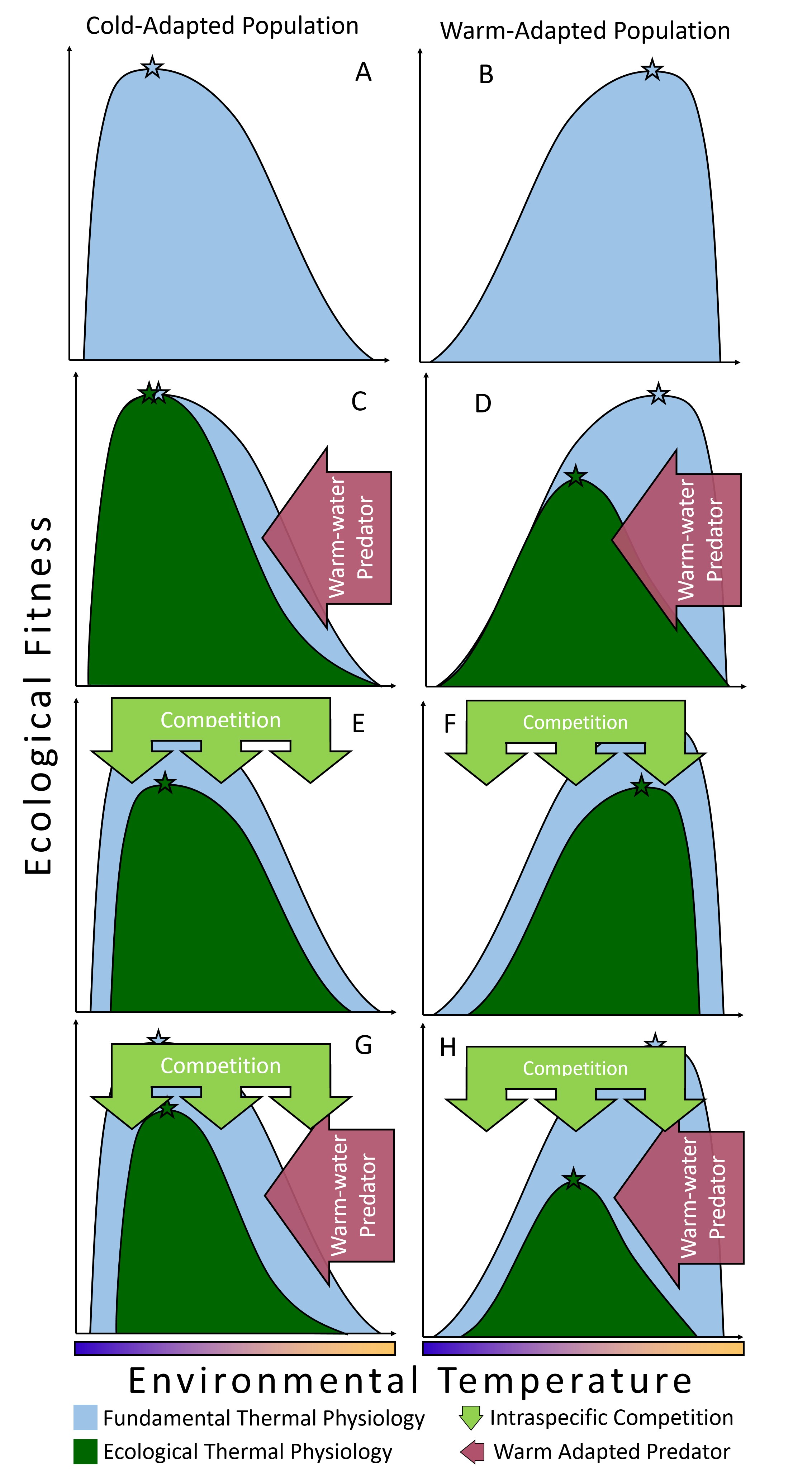Exciting news! My first ‘first-author’ publication was just accepted at Reviews in Fish Biology and Fisheries. The manuscript, entitled One Size Does Not Fit All: Variation in Thermal Eco-physiology among Pacific Salmonids, summarizes the literature on the thermal biology of Chinook salmon across their life-stages, paying special attention to evidence for variation between populations. The second half of the paper then investigates causes of this variation, exploring the interacting roles of fundamental and ecological thermal physiology. We argue these two halves of thermal biology combine to produce a diverse range of thermal physiologies that vary among populations and offering opportunities for managers to conserve and protect salmonid populations.

This is a central figure from this publication, capturing the interaction of fundamnetal and ecological thermal physiology. The y-axis of each plot represents ecological fitness, the x-axis spans a range of environmental temperatures. The columns represents either a cold-adapted (A) or warm-adapted (B) population of organisms. Their fundamental thermal physiology is represented by the light-blue performance curve, we can see that the two populations differ, the cold-adapted population exhibits greater performance at cold-temperatures and the warm-adapted population performs better at high-temperatures. Organisms contend with a multitude of ecological factors. In this diagram there is a warm-water predator (pink arrow, C, D) and intra-specific competition (green arrow, E, F). These two ecological factors impose performance limitations upon the organisms, and change the shape of the fundamental thermal physiology into that of the ecological thermal physiology (green curve). The star icons on each curve represent the ‘optimal’ temperature and serve as a landmark to draw your eye to how ecological factors can interact with eachother (G, H) and the fundamental thermal physiology to produce populations with differing thermal performances.
A Note on Timing
I am in the 6th year of my Ph.D. and this is my first first-author paper. I have classmates who achieved this goal during undergrad. I mention this only to caution others to not compare your timeline with that of your peers, therein lies impostor syndrome. Everyone’s timeline is different, and as far as I can tell (from my lowly vantage point) there doesn’t appear to be a correct path. Take the time you can to enjoy the adventure of discovery (or in this case reviewing the discoveries of others)
This publication was one of the first projects I took on as a graduate student at UC Davis way back in 2015. It originally began as a literature review for the State Water Board of California, that initial version can be found here. Over dozens of drafts and years of adjustment it evolved into a more forward looking piece that I hope will motivate more ecosystem focused approaches towards thermal management of at-risk species. I am grateful to my three co-authors for sticking with it this whole time, and to the abundance of others who offered advice and edits over the past years.